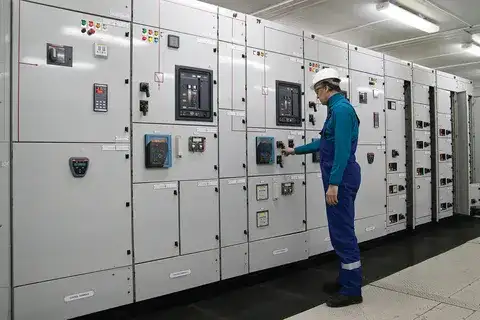Do you know various things you use such as smartphones, TVs, and electrical wires are made up of different types of electrical systems? Now, every single person living on earth is dependent on the electrical system! All the things used in our daily lives consist of electricity-dependent gadgets. Whether you have to use it in a bathroom, kitchen, bedroom, etc. It can be a hair dryer, fridge, oven, washing machine, etc, these are all examples of an electrical system.
Electrical systems are created according to the work that needs to be done! Whether it is for residential use or an industrial building. If we talk about the types of electrical systems in residential buildings, wires are hidden. Cables and power outlets are installed in a way that does not affect aesthetic appeal. On the other hand, industrial electrical systems follow a production logic. Keep attached with us to read how these electrical systems and components work to make up all the devices.
DIG DEEPER INTO OUR GUIDELINES TO LEARN ABOUT ALL TYPES OF ELECTRICAL SYSTEMS AND COMPONENTS FROM RESIDENTIAL TO INDUSTRIAL SETUPS!
Types of Electrical Systems Explained
All types of electrical systems are the main part of modern landscapes. Whether it is about homes, offices, industrial buildings, or transportation networks. As a non-experienced electrician, you need to understand all the technicalities of electrical systems. Because every construction project is unique, each having distinct room sizes. Systems are integrated according to the size and the client’s desires. In the case of estimating the cost for these systems, you can seek help from an expert Electrical system estimator. They can provide you with a full budgetary roadmap for a whole construction project. As an ordinary person, it is difficult to understand all types so taking professional help is a wise decision.
Low Voltage Electrical Systems
Do you know Low voltage electrical systems use only 50 V of electricity or less than that? The most common usage of low voltages are 48 V, 24 V, and 12 V. In residential buildings, the examples of low-voltage systems are doorbells, home security sensors, landscape lighting, etc. on the other hand, commercial low-voltage systems cover fire protection systems to communication systems.
Examples
Lighting Systems
- LED lighting
- Emergency lighting
- Landscape lighting.
Communication Systems
- Intercoms
- Telecommunication systems
- Network wiring
Security Systems
- CCTV cameras
- Fire alarms
- Access control systems
Residential Electrical Systems
Residential electrical systems are connected to the utility company’s power lines. These connections are at the service entrance. The most common components that are used in the systems are a Weatherhead, a meter socket, and a circuit breaker. Mainly, the Weatherhead protects the electrical cables. On the other hand, the meters are installed to measure the electricity consumed in the house. The most important component is the circuit breaker which controls the flow of electricity around the building. They use almost 120 to 240 V on a single-phase power.
- Lighting and Appliances
- HVAC Systems
- Smart Home Devices
- Service panel (breaker box)
- Wiring (copper or aluminum)
- Grounding systems
Commercial Electrical Systems
Commercial electrical systems are considered more complicated than residential electrical systems! How so? Because these types of buildings have to handle a lot of load of electricity. Proper installation of electrical wiring is super important for commercial buildings. It helps to maintain the safety of electricity all over the space. Most commonly, it operates on three-phase power for better efficiency.
- Lighting, point-of-sale systems, and security cameras.
- Include backup power systems like generators and UPS
- Transformers
- Panelboards
- Energy management systems Etc.
Industrial Electrical Systems
Industrial electrical systems are quite complex because they are needed for the proper functionality of machinery and devices. It consists of more components and requires the best durability! Generally, it is operated at higher voltages up to 13.8 kV or more!
- Motors, conveyors, and robotic systems.
- Safety Systems: Emergency shutdown systems and industrial lighting.
- Require robust grounding and insulation to prevent electrical hazards.
- Bus ducts
- Motor control centers (MCCs)
- Variable frequency drives (VFDs)
Renewable Energy Systems
Renewable energy systems are extracted from natural resources. Their production is higher than their consumption in the buildings. Sunlight and wind are the most common resources which are constantly being used.
- Photovoltaic (PV) panels, inverters, and batteries.
- Wind turbines, transformers, and storage units.
- Turbines, generators, and dam infrastructure.
- Large-scale wind farms for commercial power production.
- Hydroelectric plants for national grids.
IN CASE OF FINANCIAL ISSUES, YOU CAN CONTACT OUR PROFESSIONAL CONSTRUCTION ESTIMATING FIRM TO GET A ROADMAP AND COMPLETE THE PROJECT WITHIN BUDGET!
Conclusion
In short, we have discussed all types of electrical systems to meet your needs. It is extremely important to understand the electrical requirements of every project. Whether it is residential, commercial, industrial, or any other electrical work. The main thing is about the consumption of power based on the buildings’ needs! this way you can make the right decisions and save your cost for the future. However, it is highly recommended to use renewable energy resources to save your energy bills.

